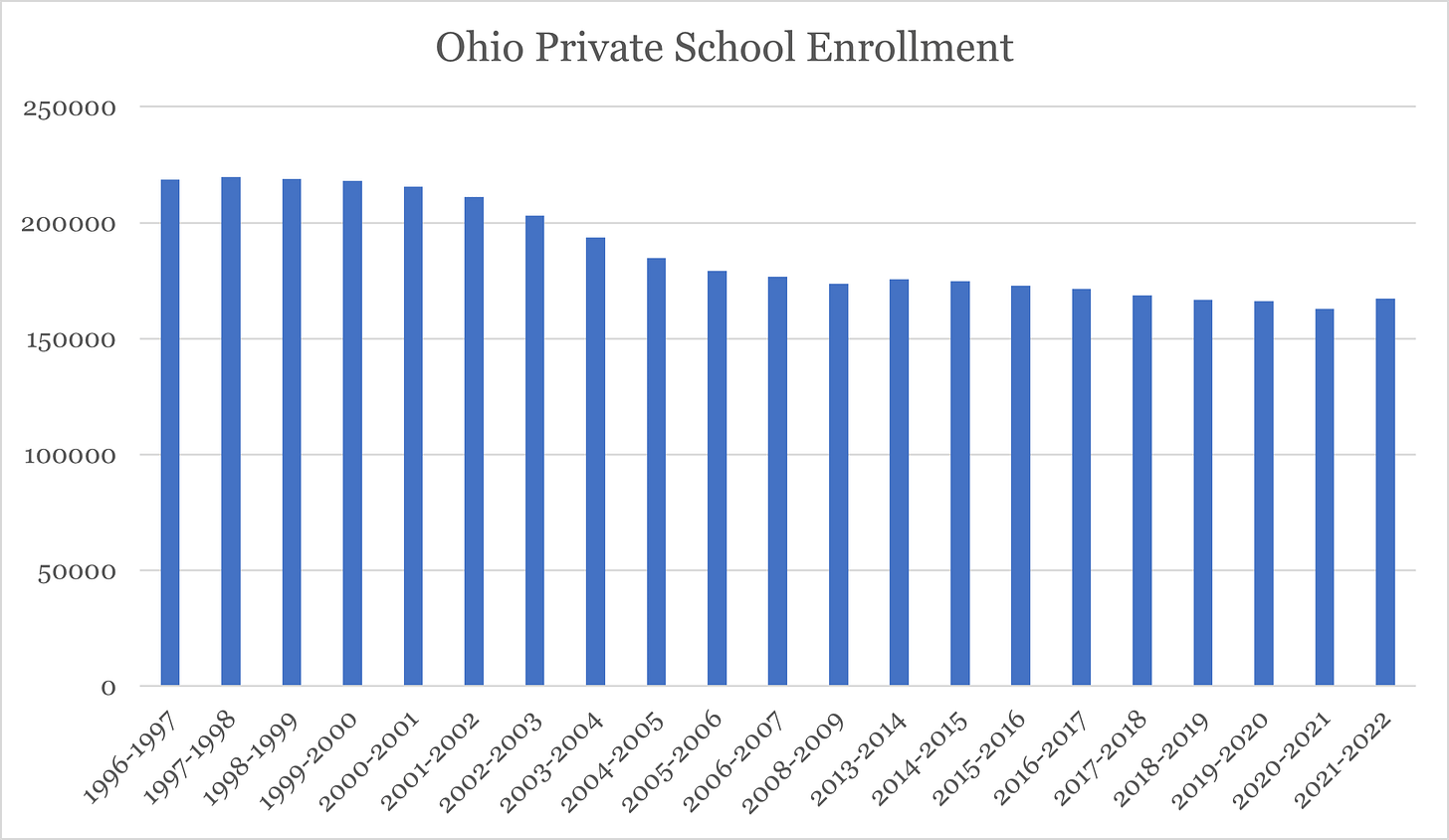Vouchers' Dirty Little Secret
There aren't enough open seats to fund the Universal Voucher Bill, which means the plan has to fund kids who were never in public schools
It’s just a matter of arithmetic, but the Universal Voucher Bill under consideration in the Ohio General Assembly can’t possibly provide educations to all 1.6 million Ohio school children.
Because there aren’t 1.6 million seats in Ohio’s private schools.
Not even close.
In fact, since Ohio started publicly subsidizing private school tuition in 1996, enrollment in Ohio private schools had dropped nearly 25 percent from a high of 219,000 students in the 1997-1998 school year to 167,395 this last school year.
Yet despite the fact that enrollment has been slowly declining in Ohio’s private schools, Ohio’s legislators and governors have continued pouring money into subsidizing their tuitions with taxpayer money. How much? Try an average 15 percent increase every year since 2013-2014. Want to guess what private school enrollment has done since 2013-2014? If you guessed dropping by an average of about 1 percent a year, you’d be correct!
So you have the state investing 15 percent more money every year in a system that’s seeing fewer students enter it every year.
This is a long-winded way of saying something pretty obvious: If the nearly 1.5 million students in Ohio’s public schools took a voucher next school year, there wouldn’t be nearly enough seats to accommodate them in the schools advocates are claiming will “rescue” them.
So what?
What that means is the overwhelming majority of voucher recipients under this plan would have to attend a public school anyway. But kids already in private schools under this plan would now get a significant tuition cut thanks to the Ohio taxpayer.
Sweet.
Whenever you hear voucher advocates say they want to allow kids to “escape” “failing public schools”, you have to take what they’re saying with a grain of salt. Because the private school system simply can’t handle many (if any) more students.
However, public schools outperform the private schools taking vouchers nearly 9 out of 10 times. So advocates’ claim about “failing public schools” is complete and utter nonsense.
So if advocates aren’t serious about their public claims, what are they trying to do with these universal voucher bills?
Simple.
They’re trying to get every private school student in the state of Ohio a public tuition subsidy.
Let’s just assume for one minute that the current Universal Voucher Bill goes through and every current private school student would get a publicly funded tuition subsidy.
What would that mean?
It would mean that more than $1 billion in taxpayer money would be headed to private schools where, by the way, the taxpayer money couldn’t be audited by public audit agencies.
No potential corruption there.
But let’s say private schools could find another 60,000 seats so they’re roughly the same size they were at their height in 1997-1998.
That would cost taxpayers $1.3 billion.
We know the Ohio Legislative Service Commission discovered that nearly 2 in 3 voucher students already never attended a public school prior to taking the voucher.
This Universal Voucher Bill would only increase that ratio.
In the end, what voucher advocates claim is their goal — increasing parental “choice” to “rescue” kids from “failing schools” — is a BS-infused smokescreen.
What these bills do is simple: force taxpayers to subsidize every private school student’s tuition.
At the expense of finally delivering a fully funded school funding system that would deliver a world-class education for every student, regardless of zip code
.
I wonder why advocates never make that argument in public?





Or- every church basement can become a school?